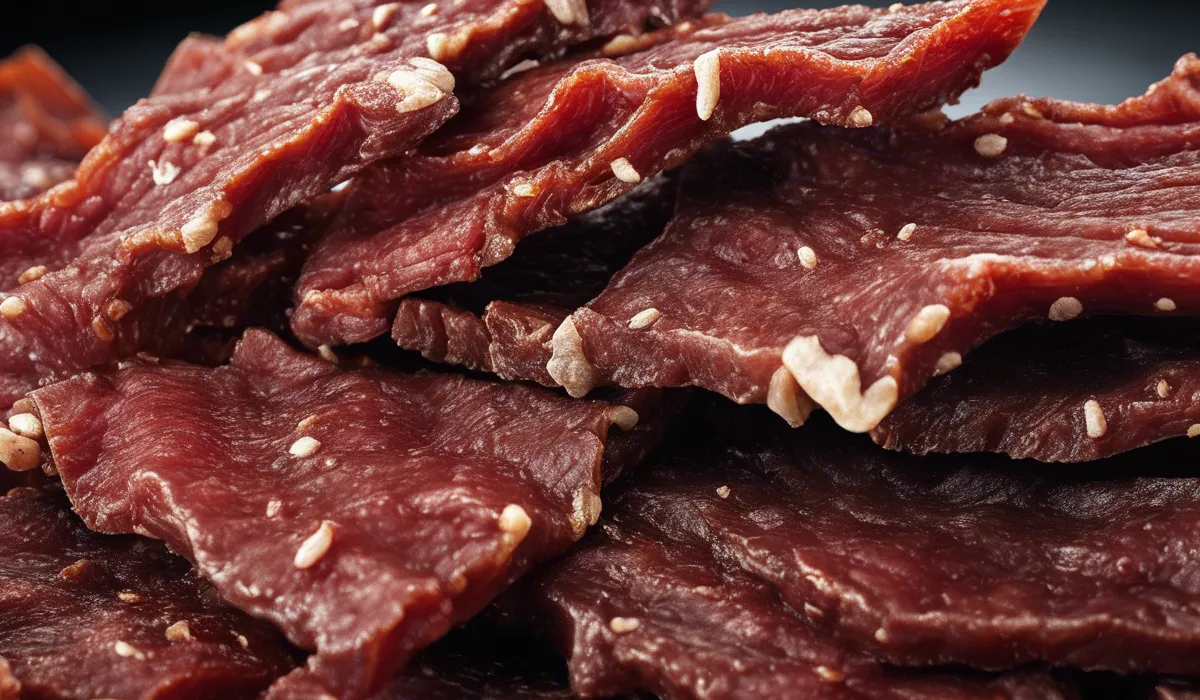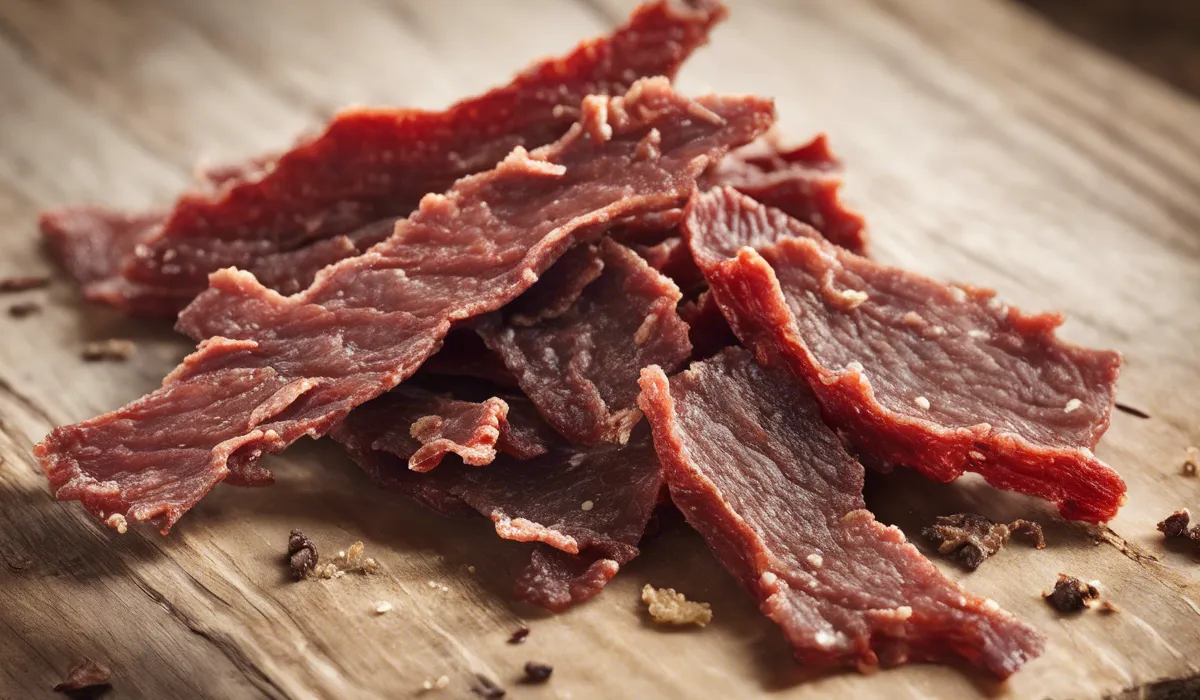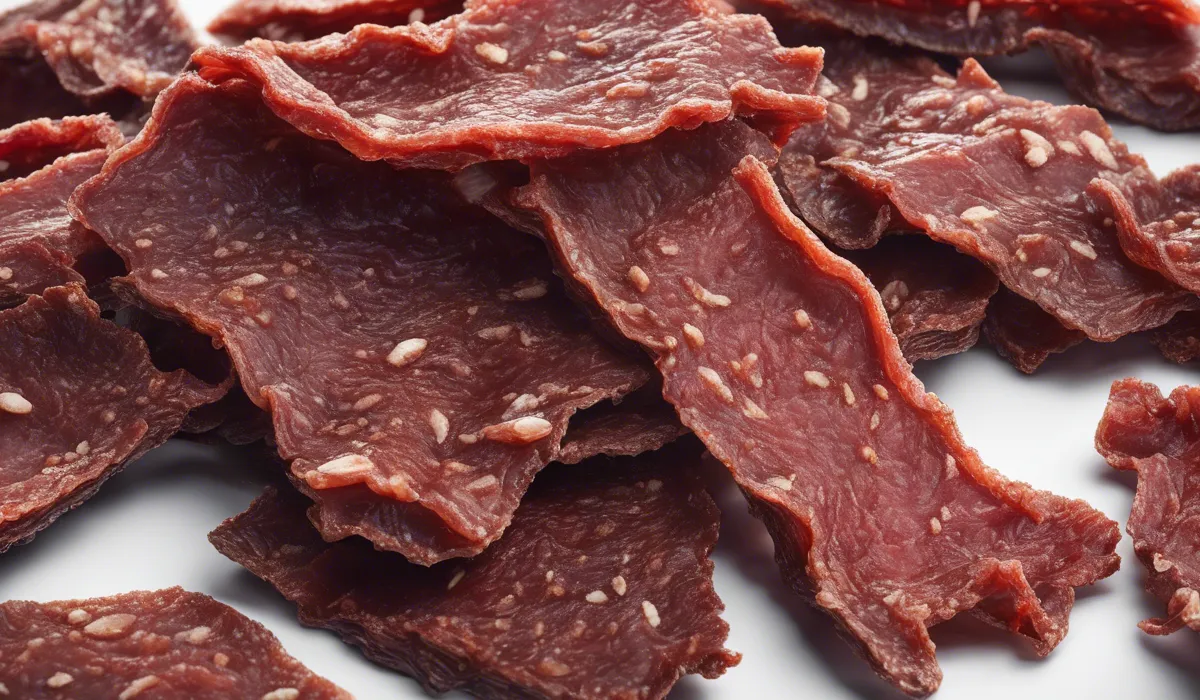Yes, beef jerky can mold if exposed to moisture, air, or if stored improperly. To prevent mold, keep jerky in airtight containers and consume it before the expiration date. Check for any signs of spoilage before eating.
Understanding Beef Jerky and Mold Growth

What is Beef Jerky?
Beef jerky is a popular snack made by drying lean cuts of beef. This process involves removing most of the moisture from the meat to prevent spoilage and to create a convenient, high-protein snack that can be enjoyed on the go.
Moisture Content in Beef Jerky
The moisture content of beef jerky is critical because it determines the shelf life and safety of the product.
Beef jerky typically has a very low moisture content, which helps to inhibit the growth of mold and bacteria. Keeping the moisture level low is essential for preserving the jerky.
Conditions for Mold Growth
Mold thrives in warm, moist environments. If beef jerky is exposed to air or moisture, it can become a breeding ground for mold. Storing jerky in a humid place or leaving it unsealed can lead to mold growth.
Inhibiting Mold in Beef Jerky
Several factors can inhibit mold growth in beef jerky. These include proper drying, the use of salt and preservatives, and airtight packaging.
These measures are taken to ensure that the jerky remains safe and consumable for as long as possible.
Shelf Life and Storage of Beef Jerky
The shelf life of beef jerky is quite long when it is stored correctly. It should be kept in a cool, dry place, away from direct sunlight.
Airtight containers or vacuum-sealed bags are the best options for storage to prevent exposure to air and moisture, which can lead to mold.
Signs and Prevention of Mold on Beef Jerky

Visual Signs of Mold
Mold on beef jerky can appear as fuzzy or slimy spots that may be green, white, or black. These spots are a clear sign that the jerky has been compromised and should not be consumed.
Changes in Smell and Texture
If the jerky has an off or musty smell, it could be an indicator of mold. Additionally, changes in texture, such as becoming overly tough or slimy, can also suggest mold growth.
Health Risks of Consuming Moldy Jerky
Eating moldy beef jerky can lead to health issues, including allergic reactions and respiratory problems. It is important to avoid consuming jerky that shows any signs of mold.
Storing Beef Jerky Properly
To prevent mold, beef jerky should be stored in airtight containers or vacuum-sealed bags. It’s also important to consume the jerky before its expiration date and to keep it in a cool, dry place.
The Role of Packaging and Preservatives
Packaging plays a crucial role in preventing mold. Airtight packaging and the use of preservatives can significantly extend the shelf life of beef jerky by preventing exposure to air and moisture.
What to Do If Your Beef Jerky Has Mold?

When to Discard Moldy Jerky?
If you find mold on your beef jerky, the safest option is to discard the entire product. Mold can penetrate deeper into the jerky than what is visible to the naked eye.
Salvaging Unaffected Portions
In some cases, if the mold is only on a small portion and the rest appears unaffected, you might consider salvaging the rest.
However, it’s generally recommended to err on the side of caution and discard all of it to avoid health risks.
Clean Up After Discovering Mold
After discarding moldy jerky, clean and sanitize the area where it was stored to prevent mold spores from contaminating other foods or surfaces.
Minimizing Contamination Risks
Proper handling is key to minimizing contamination risks. Always wash your hands before and after handling jerky, and make sure that utensils and surfaces are clean.
Future Purchase and Storage Tips
When purchasing beef jerky in the future, look for products with airtight packaging and check the expiration date.
Once opened, reseal the packaging tightly after each use and follow proper storage guidelines to prevent mold growth.
FAQs About Beef Jerky Mold
Can beef jerky develop mold?
Yes, beef jerky can develop mold if it’s exposed to moisture, air, or stored improperly.
How do you prevent mold on beef jerky?
To prevent mold, store beef jerky in airtight containers and consume it before its expiration date.
What are the signs of spoilage in beef jerky?
Signs of spoilage include mold growth, off smells, discoloration, and a change in texture.
Is it safe to eat beef jerky if it has mold on it?
No, it is not safe to eat beef jerky if it shows any signs of mold.
How long can beef jerky last before it molds?
Beef jerky can last a long time if stored properly, but it’s best to consume it by the expiration date to avoid the risk of mold.
Final Thoughts
Beef jerky is susceptible to mold when exposed to moisture and air, or if not stored correctly.
To ensure its longevity and safety, it’s critical to store jerky in airtight containers and use it by the expiration date. Always inspect for spoilage before consuming to maintain food safety.
